Consolidation and practice
These resources are to support children in guided or independent work. Roll over the highlighted resources for a description.
Measuring cylinder
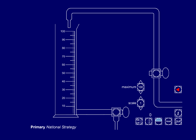
This interactive teaching program (ITP) is an ICT-based tool to support the exploration of number, measures and problem solving. Measuring cylinder ITP allows the child or teacher to simulate varying intervals on a scale, pouring liquid into the cylinder and interpreting the scale. The ITP can be used to explore and consolidate the interpretation and reading of scales, mental calculation strategies and methods of recording.
Measuring scales
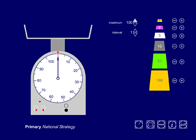
This interactive teaching program (ITP) is an ICT-based tool to support the exploration of number, measures and problem solving. Measuring scales ITP allows the child or teacher to add different masses of 1, 2, 5, 10, 50, 100 and 500 units to a scale pan. The scale intervals can be changed to challenge children to interpret different scales.
Opportunities to use and apply
Possible contexts include:
- Practical measuring activities, e.g. Find the average weight of an apple.
- Word problems, e.g. The flour on the scales came from a
1 kg bag of flour. How many grams are left in the bag?
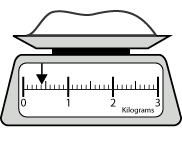
- PE, e.g. Measure how far you can throw a ball over a series of PE lessons. Plot this on a graph and use this to describe your progress.
- Data handling, e.g. The graph shows how a liquid's temperature changes over time. Read from the graph how many minutes it takes for the temperature to reach 40°C. Read from the graph how many minutes the temperature is above 60°C.
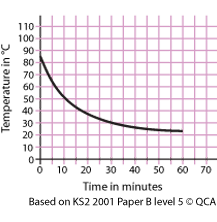
Confirming learning
Ask probing questions such as:
- On the scale, mark in some divisions that will help you to mark more accurately the positions of 35 cm and 13 cm. Explain your methods.

- Find a range of measuring cylinders and jugs. On each one, identify the level for 360 ml of liquid. Use the measuring equipment to work out the rough equivalent of 360 ml in other units such as litres, fluid ounces or pints.
- Use a scale representing grams and ounces. About how many ounces is 400 grams? About how many grams is 6 ounces?
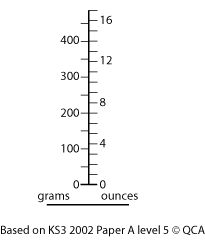


 Measuring
Measuring





